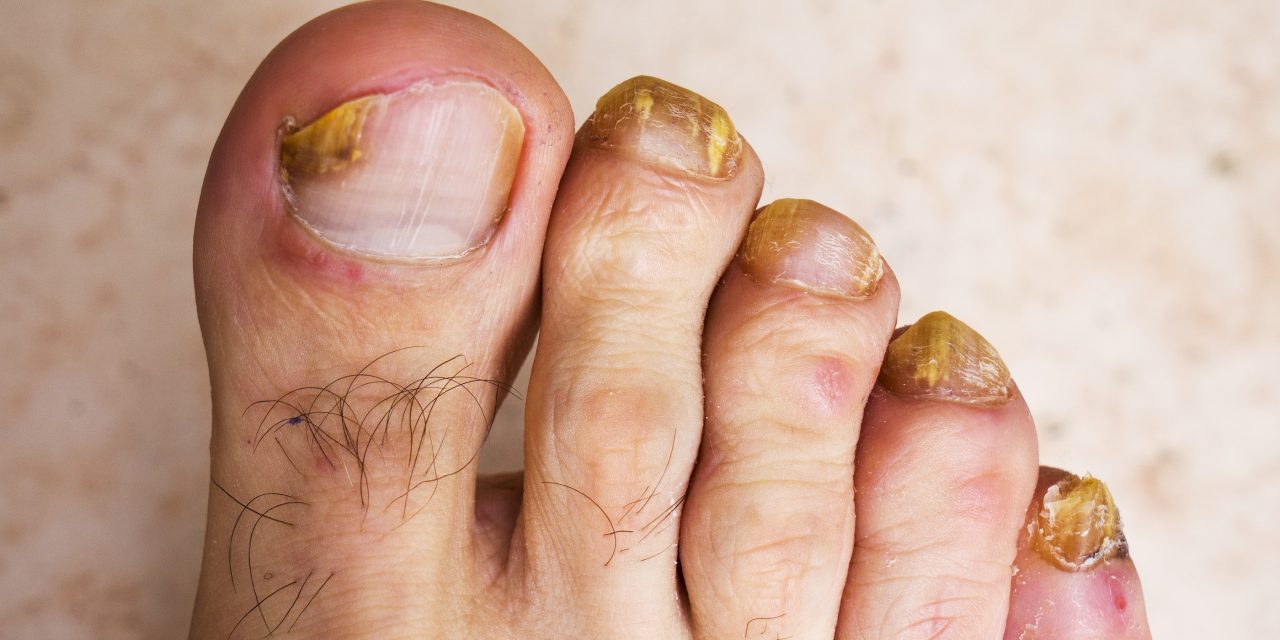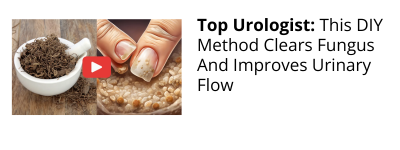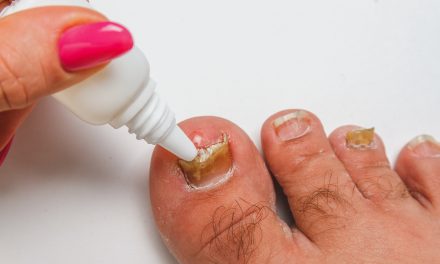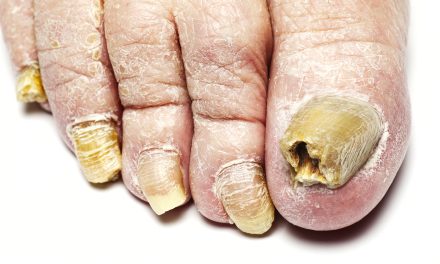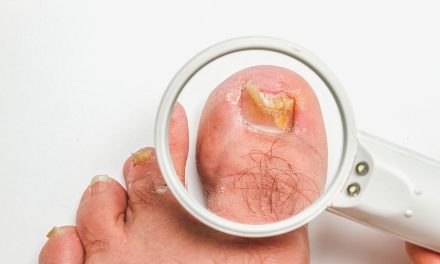Toenail fungus is a common and unsightly problem that many people experience at some point in their lives. The medical term for toenail fungus is onychomycosis, which is caused by various types of fungi, predominantly dermatophytes. These microscopic organisms can be found in public spaces like gyms and swimming pools, or even thrive in moist environments, like your very own shoes and socks.

Getting a better understanding of where toenail fungus comes from and how it spreads can not only help with treatment but also help in preventing the condition from occurring in the first place. There are multiple risk factors and transmission pathways that lead to toenail fungus infection, and knowing them can provide valuable insights for avoiding and managing the condition.
Key Takeaways
- Toenail fungus is caused by various types of fungi, predominantly dermatophytes, and can be contracted from public spaces or moist environments.
- Understanding risk factors and transmission pathways aids in both treatment and prevention of toenail fungus.
- Proper diagnosis, treatment options, and preventative measures are crucial to avoid potential complications of untreated toenail fungus.
Causes of Toenail Fungus
Toenail fungus is a common condition caused by the overgrowth of various fungi. This section outlines two main types of fungi responsible for toenail infections: Dermatophyte infections and yeasts and molds.
Dermatophyte Infections
Dermatophytes are a group of fungi that can break down and feed on keratin, a protein found in skin, hair, and nails. Three common dermatophytes responsible for toenail fungus include:
- Trichophyton rubrum
- Trichophyton interdigitale
- Epidermophyton floccosum
These fungi thrive in warm, moist environments such as showers, pool areas, and locker rooms. Walking barefoot in these locations increases the chances of dermatophyte infection. Factors that increase susceptibility to dermatophyte infections include:
- Age: Older age affects blood circulation, making it harder for the immune system to detect and fight infections.
- Health conditions: Diseases such as diabetes and peripheral artery disease can impair blood circulation to the feet, increasing the risk of infection.
- Nail trauma: Injuries to the toenail can create openings for fungal infections.
Yeasts and Molds
In addition to dermatophytes, yeast and mold infections can cause toenail fungus. Some common yeasts and molds include:
- Candida species, particularly Candida parapsilosis
- Scytalidium species
- Fusarium species
Yeasts, unlike dermatophytes, do not feed on keratin but can still cause fungal nail infections. The risk of yeast and mold infections can be influenced by:
- Weakened immune system: People with compromised immune systems are more susceptible to yeasts and molds.
- Prolonged exposure to water: Regularly soaking feet and hands in water can weaken nails, making them susceptible to fungal infections.
- Poor personal hygiene: Proper foot hygiene, such as keeping feet clean and dry, can lower the risk of infection.
In conclusion, toenail fungus is caused by a combination of factors and fungal species. Understanding the causes and practicing good personal hygiene can help prevent the development of toenail fungus.
Risk Factors
Age-Related Factors
As people age, certain changes in their bodies can make them more susceptible to toenail fungus. For instance, the blood flow to their toenails may decrease, making it more difficult for their immune system to detect and combat the infection. Additionally, toenails tend to grow thicker and slower with age, which can create an ideal environment for fungal growth.
Environmental Exposure
Frequent exposure to damp, warm environments, such as public swimming pools, gyms, and locker rooms, can increase the risk of contracting toenail fungus. Moisture and humidity provide favorable conditions for fungi to thrive. Wearing footwear that does not allow proper air circulation, like tight shoes or non-breathable materials, can also contribute to fungal infection.
Personal Hygiene
Poor hygiene practices can increase the likelihood of developing toenail fungus. Habits such as:
- Not drying feet thoroughly after showering
- Wearing damp socks or shoes
- Using contaminated personal care items like nail clippers or towels
- Not changing socks regularly
can create conditions that promote fungal growth.
Health Conditions
Certain health conditions can make individuals more susceptible to toenail fungus. These include:
- Diabetes: Elevated blood sugar levels can impair immune system function and blood circulation, making it more difficult to fight infections.
- Peripheral artery disease (PAD): This condition, which affects blood flow to the extremities, can also weaken the body’s ability to combat infections.
- Weakened immune system: People with weakened immune systems, such as those with HIV/AIDS or taking immunosuppressive medications, may have a harder time fighting off fungal infections.
By understanding the risk factors associated with toenail fungus, individuals can take steps to reduce their chances of developing this common but stubborn condition. Proper hygiene, appropriate footwear choices, and managing underlying health conditions can all contribute to maintaining healthy, fungus-free toenails.
Transmission Pathways
Person to Person
Toenail fungus, also known as onychomycosis, can be transmitted from one person to another through direct physical contact or sharing personal items. The fungal spores responsible for the infection can easily transfer between individuals.
- Direct contact: Toenail fungus can spread through skin-to-skin contact with an infected person. This may occur in situations such as participating in sports that involve physical contact, like wrestling or football.
- Sharing personal items: Using items that belong to someone with a fungal infection can also lead to the transmission of toenail fungus. For example:
- Sharing socks or shoes
- Using contaminated nail clippers, files, or other manicure and pedicure tools
- Borrowing towels, bed sheets, or clothing
Taking precautions, such as wearing shower shoes in public locker rooms and avoiding the sharing of personal items, can help minimize the risk of person-to-person transmission.
Contaminated Surfaces
Toenail fungus can survive on various surfaces, which makes it easy for the spores to spread in certain environments. They tend to thrive in warm, dark, and moist places. Some common contaminated surfaces include:
- Public swimming pools and locker rooms: The wet and humid environment of these facilities provides an ideal breeding ground for fungal spores. Walking barefoot can increase the risk of contact with contaminated surfaces in these areas.
- Gyms and sports facilities: Toenail fungus can reside on exercise equipment, yoga mats, and saunas. While these are not the typical environments for the fungus to propagate, it is possible to come into contact with fungal spores when using these facilities.
- Home environments: Fungal spores can also be present on various surfaces in one’s own home, particularly on damp bathroom floors or in showers.
To minimize the risk of contracting toenail fungus from contaminated surfaces, it is essential to maintain good foot hygiene and take preventive measures, such as:
- Wearing shower shoes or flip-flops in public facilities
- Regularly cleaning and disinfecting home surfaces
- Avoiding walking barefoot in high-risk areas
- Ensuring that communal facilities follow adequate cleaning protocols
Common Habitats for Fungi
Public Showers
Public showers are known to be prime locations for the growth and spread of fungi. The warm, moist environment provides optimal conditions for fungal growth. To reduce the risk of infection, it is highly recommended to:
- Wear shower shoes or flip-flops
- Dry your feet thoroughly after showering
- Avoid sharing towels or personal hygiene items
Swimming Pools
Swimming pools are another common habitat for fungi due to their moist and often crowded conditions. Chlorine and other disinfectants in pools may help control some fungi, but they do not guarantee complete protection. Preventative measures include:
- Wearing water shoes or flip-flops in pool areas
- Washing and drying your feet after swimming
- Changing out of wet swimwear as soon as possible
Nail Salons
Nail salons can also be a source of toenail fungus exposure if proper hygiene and sanitization measures are not followed. Clean and sterile instruments are crucial to avoid spreading infections. Customers should:
- Verify that the salon follows the regulations for proper tool disinfection
- Avoid using shared pedicure tubs or ensure they are cleaned thoroughly between uses
- Bring their own nail tools if concerned about salon cleanliness
Symptoms of Toenail Fungus
Toenail fungus can manifest as a variety of unpleasant symptoms. This section covers three common indicators of toenail fungus infection: change in nail color, nail distortion, and pain and discomfort.
Change in Nail Color
A key symptom of toenail fungus is a change in nail color. The affected nails may have one or more of the following characteristics:
- Yellow or brownish discoloration
- White spots
- A dark color under the nail, caused by debris buildup
In more severe cases, the nail may also look thickened and have an unpleasant odor.
Nail Distortion
Another sign of toenail fungal infection is nail distortion. This can involve:
- Thickened nails
- Crumbly, fragile nails
- Jagged or irregular edges
- Nail separation from the nail bed (onycholysis)
These distortions often worsen over time if the infection is left untreated.
Pain and Discomfort
Toenail fungus may cause pain and discomfort in the affected area. This can include:
- Soreness or tenderness to touch
- Inflammation and swelling around the nail
- Difficulty wearing shoes or walking
It’s important to note that not all individuals with toenail fungus will experience pain. However, if any of these symptoms are present, seeking professional help is advised to prevent further complications.
Diagnosis
Physical Examination
When diagnosing toenail fungus, the first step a medical professional may take is a thorough physical examination. During this examination, the clinician will assess the appearance, shape, and color of the nails. Common signs of toenail fungus include:
- Yellowing or browning of the nails
- Thickening or distortion of the nails
- Crumbling or splitting of the nails
- Separation of the nail from the nail bed
It is important to note that other nail conditions may mimic the appearance of toenail fungus, so a physical examination alone is not enough for a definitive diagnosis.
Laboratory Tests
To confirm the diagnosis, a doctor might request laboratory tests. These tests allow professionals to identify the specific organism causing the infection. Common laboratory tests include:
- KOH Test: A potassium hydroxide (KOH) test is performed by obtaining a small sample of the affected nail, placing it on a microscope slide, and adding a drop of KOH solution. This solution dissolves skin and nail cells, revealing fungal elements under the microscope.
- Nail Culture: Nail cultures involve the collection of a small nail sample and placing it onto culture media in a laboratory. After a certain period, the laboratory technicians observe any fungal growth on the media. This method helps identify the specific fungus responsible for the infection.
- Periodic Acid-Schiff Stain: This is a special staining technique used to identify fungi in nail samples. The nail sample is treated with chemicals that react with fungal cell walls, resulting in a characteristic staining pattern visible under the microscope.
Once laboratory tests are completed, the doctor can confirm if the toenail infection is caused by a fungus and determine the most appropriate treatment options.
Treatment Options
When dealing with toenail fungus, there are several methods available to tackle the problem. This section will discuss the available treatment options, categorized under three main headings: Medications, Topical Treatments, and Surgical Procedures.
Medications
Oral antifungal medications are often prescribed to treat toenail fungus. Some common medications include:
- Terbinafine (Lamisil): This medication is usually taken once a day for 12 weeks. It has a high success rate and is considered the first-line treatment option.
- Itraconazole (Sporanox): Typically taken in one-week cycles, itraconazole is another widely used medication for treating toenail fungus.
- Fluconazole (Diflucan): This medication is taken once a week for several months and may be prescribed in cases where other medications are not suitable.
Note: Consult your healthcare provider before taking any medication. These medications may have side effects or interact with other medications you may be taking.
Topical Treatments
Aside from oral medications, various topical treatments can be directly applied to the infected area. Some popular choices include:
- Antifungal creams and ointments: Available over-the-counter or by prescription, these products are applied directly to the affected toenail daily.
- Antifungal nail polish: Products such as ciclopirox (Penlac) can be applied to the infected nail like standard nail polish. The polish creates a barrier that prevents the fungus from spreading.
- Snakeroot extract: Derived from the plant Ageratina pichinchensis, snakeroot extract is a natural treatment option that has shown effectiveness in treating fungal infections.
Surgical Procedures
In severe cases of toenail fungus or when other treatments have been ineffective, surgical procedures might be considered. These include:
- Nail avulsion: Under local anesthesia, the infected nail is entirely removed to expose the underlying nail bed for treatment.
- Laser therapy: Using laser energy, the fungus is targeted and destroyed without harming the surrounding healthy tissue. This method is non-invasive and has shown promising results in recent studies.
When deciding on a treatment option for toenail fungus, it is essential to consult your healthcare provider to discuss your specific case, the potential benefits, and side effects of each treatment.
Preventative Measures
Proper Footwear
Wearing appropriate footwear is crucial in preventing toenail fungus. Opt for shoes made of breathable materials such as mesh or canvas to allow air circulation around your feet. Additionally, avoid sharing footwear with others to minimize the risk of infection. When selecting socks, choose moisture-wicking materials such as:
- Cotton
- Wool
- Synthetic materials specifically designed for athletic use
Remember to replace damp or sweaty socks promptly to maintain a dry environment for your feet.
Foot Hygiene
Maintaining good foot hygiene is essential in the prevention of toenail fungus. Regularly wash your feet with soap and water, taking care to clean between your toes. After washing, thoroughly dry your feet to discourage fungal growth. To further enhance foot hygiene, consider the following measures:
- Regularly trim toenails, avoiding cutting them too short or with irregular edges
- Use an antifungal spray or powder on your feet and inside shoes
- Wash your socks and footwear regularly, and air them out between uses
- Disinfect nail clippers and other pedicure tools after each use
Environmental Precautions
In environments known for fungal growth, such as public showers, pools, and locker rooms, take extra precautions to protect your feet. To minimize infection risk, adhere to these practices:
- Wear flip-flops or water shoes
- Avoid walking barefoot in these common areas
- Dry your feet carefully after exposure to a wet or damp surface
- Keep personal items (e.g., towels) separate from those of others
By following the guidelines in these three subsections, the likelihood of developing toenail fungus can be greatly reduced, promoting overall foot health and wellness.
Complications of Untreated Toenail Fungus
Spread of Infection
If left untreated, toenail fungus can lead to worsening infection and may spread to other nails and areas of the body. This occurs when the fungus breaks through the nail, entering the underlying skin and surrounding tissue. Those with weakened immune systems, such as individuals with diabetes, are particularly at risk for complications from toenail fungus. The infection can spread to other areas, including the feet, hands, and even the groin area, causing a condition known as jock itch.
Permanent Nail Damage
In some cases, untreated toenail fungus can cause permanent damage to the nail matrix, where new nail cells form. If the matrix is damaged, it may result in the nail growing misshapen, thick, or discolored. In extreme cases, the nail might completely separate from the nail bed and fall off, leading to the loss of the nail.
Some of the risks associated with untreated toenail fungus include:
- Pain and discomfort: Infected nails can become thicker and distorted, putting pressure on the surrounding skin and causing pain while walking or wearing shoes.
- Secondary bacterial infections: The open sores caused by the fungal infection can lead to bacterial infections in the skin and underlying tissues.
- Decreased self-esteem: Many people feel self-conscious or embarrassed by the appearance of their infected nails, impacting their social lives and overall confidence.
In conclusion, untreated toenail fungus can cause a variety of complications that go beyond aesthetics. Timely treatment and proper care can help minimize the risk of spread, permanent damage, and additional health issues.
Myths and Misconceptions
Home Remedies
There are several home remedies that people often suggest for treating toenail fungus, but it is important to remember that not all of them are scientifically proven to be effective. Some common home remedies include:
- Vinegar soaks: Some people believe that soaking the affected toenail in a mixture of vinegar and water can help fight off the fungus. However, there is limited evidence to support the efficacy of this method.
- Tea tree oil: This essential oil is popular for its antifungal properties, but its effectiveness in treating toenail fungus has not been conclusively proven.
- Garlic: Although garlic is known for its antimicrobial properties, there is no solid evidence to back up its use as a treatment for toenail fungus.
It is important to consult a healthcare professional before trying any home remedies, as they may not be effective and could potentially cause further complications.
Contagiousness Myths
There are several myths surrounding the contagiousness of toenail fungus. Some common misconceptions include:
- Toenail fungus is highly contagious: While it is true that the fungus that causes toenail infections can spread through direct contact and sharing personal items, it is not as highly contagious as some people believe. Certain factors, such as a weakened immune system and existing skin conditions, can increase one’s susceptibility to developing an infection.
- Wearing shoes prevents the spread of toenail fungus: Although wearing shoes can help provide a barrier of protection, it is not a foolproof method of preventing the spread of toenail fungus. The fungus thrives in warm, damp environments, so it is important to practice good foot hygiene to minimize the risk of infection.
- Only public places pose a risk of toenail fungus: Contrary to popular belief, toenail fungus can be contracted in various environments, not just in public spaces like public showers, pools, and locker rooms. Proper foot hygiene and regular inspection of one’s toenails can help prevent the development and spread of fungal infections.
In summary, toenail fungus can be a tricky condition to treat, and there are many myths and misconceptions surrounding it. It is crucial to be informed and consult with a healthcare professional before attempting any treatments or making conclusions about its contagious nature.
Frequently Asked Questions
What are the initial signs of toenail fungus infection?
The initial signs of toenail fungus infection include changes in the appearance of the nail, such as discoloration (yellow, brown, or white), thickening, brittleness, and a foul smell. The affected nail may also start to separate from the nail bed, causing discomfort and pain in the surrounding area.
Can toenail fungus be fatal if left untreated?
Toenail fungus, by itself, is not fatal. However, if left untreated, it can cause complications, especially in individuals with weakened immune systems or pre-existing health conditions, such as diabetes. In extreme cases, the infection can spread to other parts of the body, leading to more severe health issues, including cellulitis or blood poisoning (sepsis).
What are the different varieties of toenail fungal infections?
There are several types of toenail fungal infections, the most common being:
- Dermatophyte infections, caused by fungi such as Trichophyton rubrum, Trichophyton interdigitale, or Epidermophyton floccosum.
- Yeast infections, typically caused by Candida albicans or Candida parapsilosis.
- Non-dermatophyte mold infections, caused by a variety of environmental molds.
Each type of fungus can exhibit different characteristics and may respond to different treatments.
What triggers the development of toenail fungus?
Toenail fungus often develops when fungi, present in our environment, get trapped in warm, moist environments, such as our shoes. Some factors that can increase the risk of developing toenail fungus include:
- Persistent exposure of toes to moisture.
- Wearing tight-fitting, poorly ventilated shoes.
- Injury to the nail or surrounding skin.
- Existing health conditions, such as diabetes or a weakened immune system.
What are the most effective ways to eliminate toenail fungus quickly?
The most effective ways to eliminate toenail fungus depend on the severity and type of infection. Some common treatment options include:
- Over-the-counter antifungal creams or ointments.
- Prescription oral antifungal medications.
- Topical prescription lacquer.
- Laser or photodynamic therapies.
- In severe cases, surgical removal of the infected nail.
It is important to consult a healthcare professional for an appropriate treatment plan based on the individual’s specific circumstances.
How can you tell if a toenail fungus treatment is working?
Signs that toenail fungus treatment is working include the gradual disappearance of the initial symptoms, such as discoloration, thickening, and brittleness. The nail should also start to grow back clear and healthy. It is important to note that complete recovery from toenail fungus can take several months, as new, healthy nail growth needs to replace the infected parts.
Conclusion
In conclusion, understanding the causes and sources of toenail fungus is essential for preventive measures and effective management. By recognizing the potential risk factors, such as warm and moist environments, poor foot hygiene, and certain medical conditions, individuals can take proactive steps to minimize the likelihood of toenail fungus. Additionally, seeking prompt medical attention and adopting preventive strategies, such as wearing breathable footwear and practicing good foot hygiene, can contribute to overall foot health and reduce the risk of toenail fungus. By being mindful of potential sources and taking preventive measures, individuals can work towards maintaining healthy nails and overall foot wellness.

